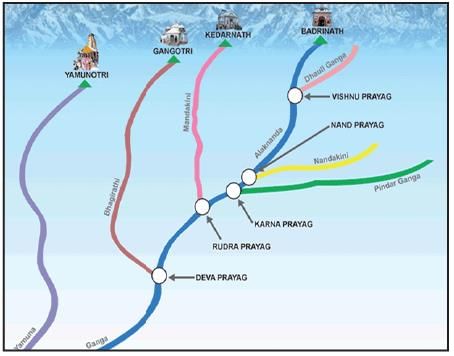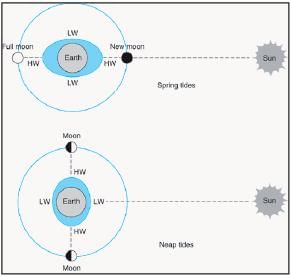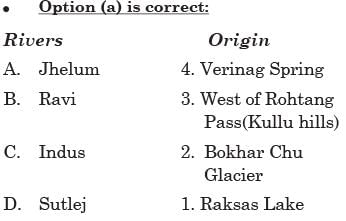Test: Geography NCERT Based Test - 2 - UPSC MCQ
25 Questions MCQ Test - Test: Geography NCERT Based Test - 2
Which of the following factors are responsible for the variations in insolation at the surface of the Earth?
1. Revolution of the earth around the sun
2. Rotation of earth on its axis
3. The angle of inclination of the sun’s rays
4. Length of the day
5. Transparency of the atmosphere
Select the correct answer using the code given below:
1. Revolution of the earth around the sun
2. Rotation of earth on its axis
3. The angle of inclination of the sun’s rays
4. Length of the day
5. Transparency of the atmosphere
| 1 Crore+ students have signed up on EduRev. Have you? Download the App |
Trees that are bent into unusual shapes as a result of being blown at an extreme angle by the wind, found largely along the upper edge of the tree line in Colorado Rocky Mountains and archipelago of Tierra del fuego are called?
Consider the following statements:
1. Prime Meridian is a straight line passing through Greenwich.
2. International Date Line coincides with 180° longitude but deviates to make allowance for contiguous lands.
Which of the statements given above is/are correct?
Which of the following is the largest volcanic region on the earth?
Consider the following pairs:
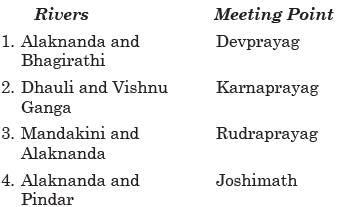
Which of the pairs given above is/are correctly matched?
Consider the following statements regarding the Inversion of Temperature:
1. A long winter night with clear skies and still air is ideal situation for inversion.
2. Over polar areas, a temperature inversion is normal throughout the year.
Which of the above statements is/are correct?
What is the impact of the cold oceanic currents in the tropical regions on the western margins of the continents?
If the earth stops spinning gradually, which of the given options might become a possibility?
Consider the following statements regarding Erosional process:
1. It is controlled by the Kinetic Energy.
2. Weathering is a pre-condition for erosion to take place.
Which of the above statements is/are correct?
Consider the given statements with respect to ionosphere:
1) Ionosphere deflects long wavelength, medium wavelength and short wavelength radio waves and help in radio transmissions.
2) Ionosphere is the hottest region of the atmosphere
Which of the above given statements is/are not correct?
Consider the following statements regarding the dew formation in the atmosphere:
1. The ideal conditions for its formation are a clear sky, calm air, high relative humidity, and cold and long nights.
2. For the formation of dew, it is necessary that the dew point is below the freezing point.
Which of the above statements is/are correct?
Consider the following statements and state which are correct?
1. The rate of temperature decrease in the atmosphere with increasing altitude is known as the lapse rate.
2. The amount of heat energy expended in changing the state or phase of a body, without raising its temperature is known as ‘latent heat’.
What is the correct arrangement of the following mountain ranges from south to north?
1) Palkonda hills
2) Javadi hills
3) Nallamalai hills
4) Cardamom hills
5) Shevaroy hills
Choose the answer using the codes given below:
“Cloud is a mass of minute water droplets or tiny crystals of ice formed by the condensation of the water vapour in free air at considerable elevations”. In this context, consider the following statements:
1. Cirrus clouds are always white in colour.
2. Cumulus clouds look like cotton wool and they have a circular base.
3. Nimbus clouds are black or dark gray in color.
Which of the above statements is/are correct?
Consider the given statements with respect to tornadoes:
1) For a vortex to be classifies as a tornado, the only precondition required is the contact of the violently rotating column of air with the clouds above.
2) In the US, warm moist winds from the Gulf of Mexico travel north and meet the cold dry winds from Canada, leading to the formation of tornadoes
3) The region lying between the Rocky and Appalachian mountains is called the Tornado Alley
Which of the above given statements is/are correct?
With reference to the Spring Tides, consider the following statements:
1. During these tides, the sun and the moon are at right angles.
2. They occur twice a month.
Which of the following statements is/are correct?
The tropic of cancer does not pass through which of the given countries?
Consider the following statements regarding the characteristics of climatic groups according to Koeppen:
1. In dry climates potential evaporation exceeds precipitation.
2. In Tropical climate average temperature of the coldest month is 18° C or higher.
Which of the above statements is/are correct?
The Jutland peninsula in Europe comprises of which of the following group of countries:
Consider the following statements regarding Forest Cover and Forest Area:
1. The forest cover in the area notified and recorded as the forest land irrespective of the existence of trees, while the actual forest area is the area occupied by forests with canopy.
2. The forest area is based on the records of the State Revenue Department, while the forest cover is based on aerial photographs and satellite imageries.
Which of the above statements is/are incorrect?
Which of the following statements is not correct?
Match the following:

Select the correct answer using the code given below:
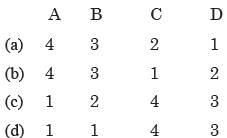
Consider the following statements in context of Baltic Sea:
1) The youngest sea on the planet, emerging from the retiring ice masses, the Baltic Sea drains into the North Sea
2) The composition of Baltic Sea includes both salt and fresh water, which in turn has given rise to a sensitive, unique and an interdependent marine ecosystem
3) The term Nordic, Baltic and Scandinavian are used interchangeably for the same group of states across the Baltic Sea
Which of the above given statements is/are correct?


